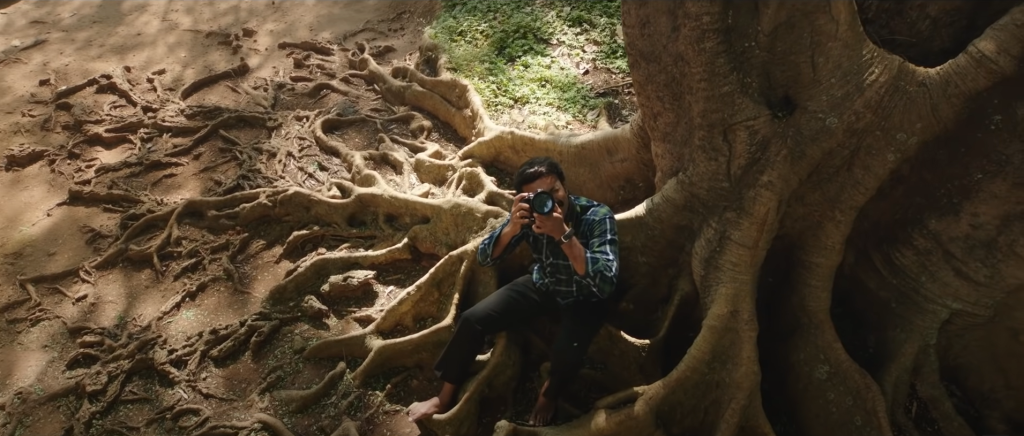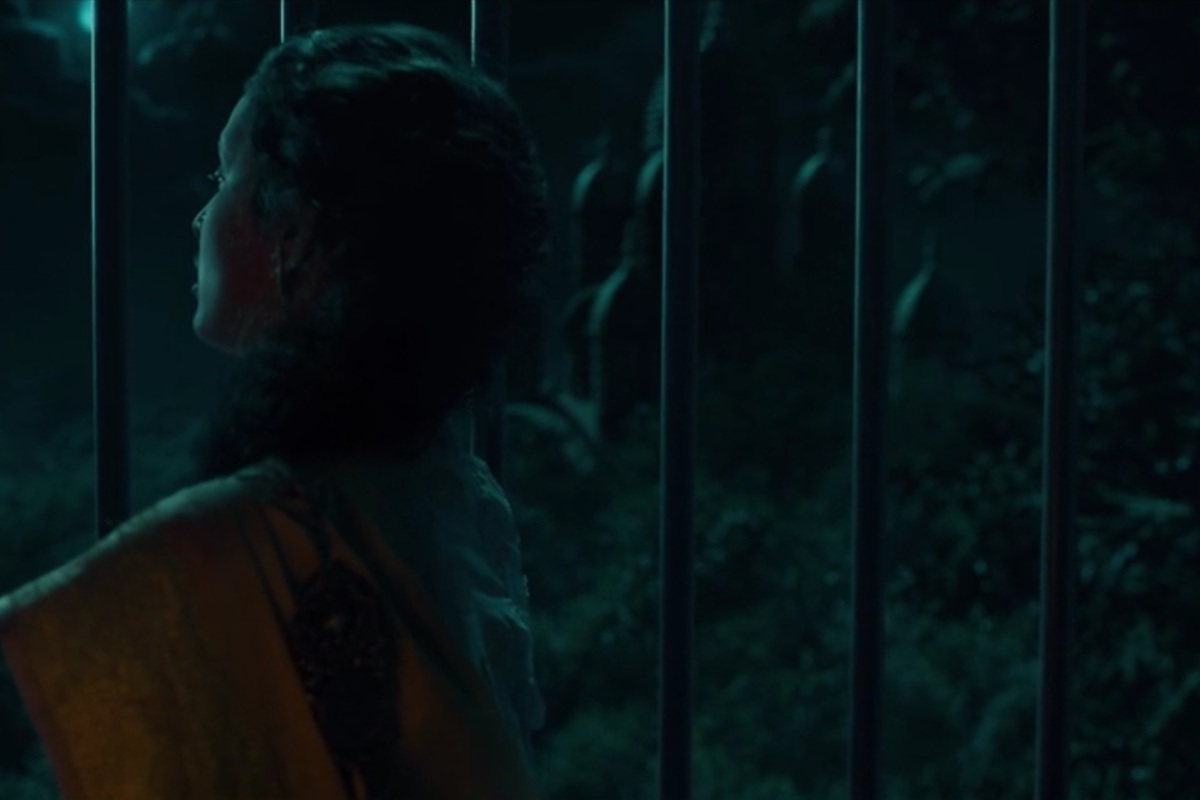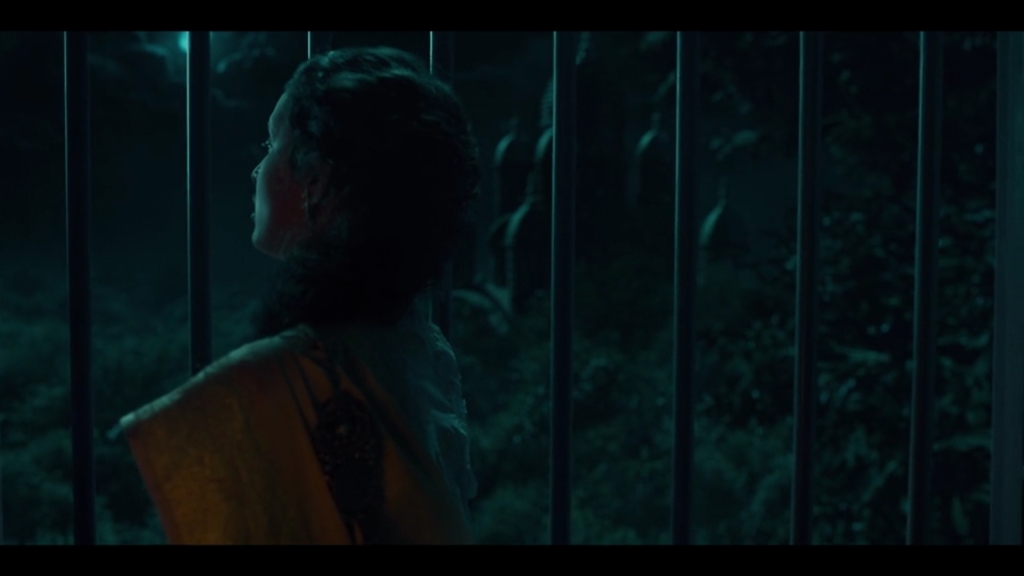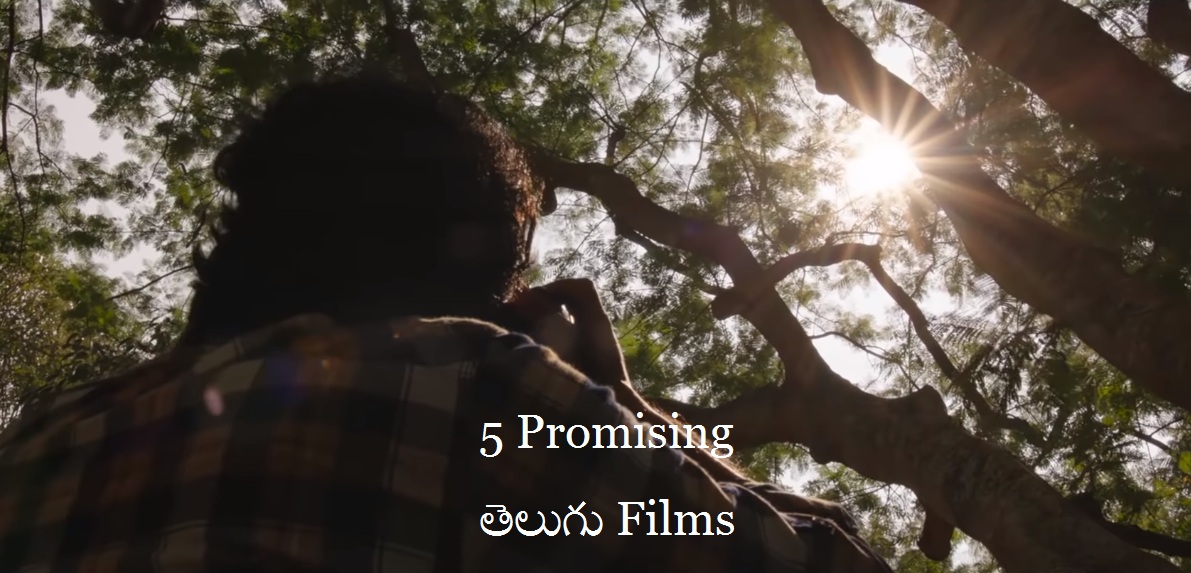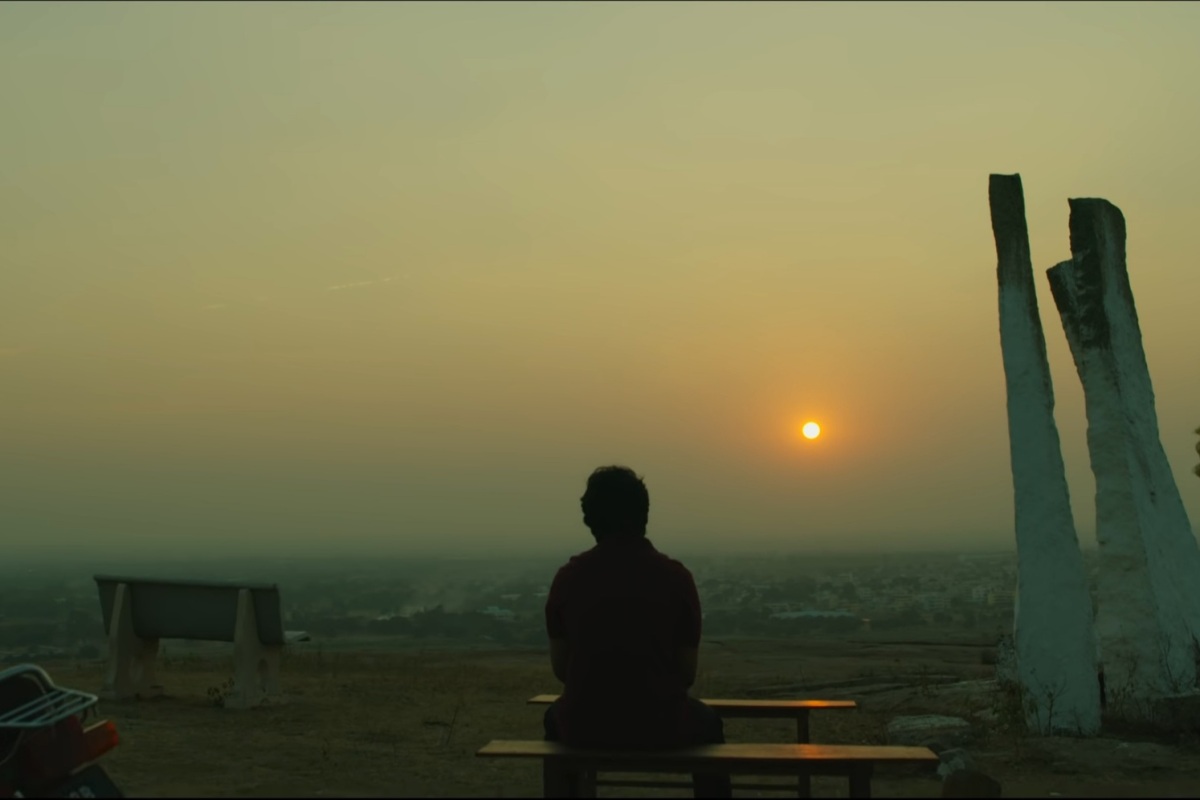Should go without saying, but this article contains spoilers for Soorarai Pottru.
Midway in Soorarai Pottru, there is a long stretch in which Nedumaaran Rajangam aka Maara, a trainee in Indian Air Force, receives a phone call from his lamenting mother, informing about the deteriorating health of his father, Rajangam. Rajangam is a teacher who lives by the rules. Maara, on the other hand, believes in revolution and doesn’t spare a single minute if he feels it will go in vain. Owing to the conflict of ideologies, their relationship is strained, and they are no longer on talking terms. As Maara, stationed far from his hometown in rural Tamil Nadu, rushes to visit his ailing father, he is unable to afford a flight ticket. By the time he swerves different modes of transportation and arrives at the destination, his father’s last journey has ended, too. The life-affirmative experience leaves Maara heartbroken and humiliated by shedding light on his financial constraints, and forges his life mission: to make flying an affordable transportation.

This is the defining sequence of the film, where character motivation and core challenge materialize. What’s interesting, though, is the classical treatment. The sequence is designed to tug the heartstrings, but it is neither in the excessively melodramatic zone often found in the works of Atlee or Samuthrakani nor does it try to underplay the emotion to keep it light like in Maharshi. This is a director’s film, for the most part, despite the presence of a major star in its center, and this will remain the factor I’ll be referring to while noting what worked and what didn’t.
The narrative clearly establishes aircraft as a status symbol distinguishing classes in Indian society and uses Maara’s character to erase the lines of social strata. A man belonging to the socioeconomic demographic that yearns to fly in a lifetime, aspires to start his own airline. It’s not subtext and is in your face, to an extent that Maara’s dialogues coincide with images of the working-class population. After a point, it feels redundant, but is nevertheless, significant.
It seems a lot of criticism is being directed towards the lack of depth in the antagonist, Paresh Goswami’s character, and I don’t feel the same way. The story is told from the perspective of Maara, who idolized Goswami. Maara knows little about Goswami, besides the public image that has been carved in his mind. Goswami is a stranger who treats Maara as an outsider, and it perfectly explains why we, the viewers, know equally little about him. Likewise, people closest to the protagonist – his mother, wife, and father – are the ones we get to know the most. That says something. However, Goswami’s character is revealed to us, in the washroom, much before Maara learns about it. I wonder whether Maara knows that his idol suffers from anxiety attacks.
In contrast, the relationship of Maara and Bommi, his wife, felt like a device to fall back on to and juggle between the conflicts of the film with an intention to keep it engaging. For instance, there are two points where the protagonist hits the rock bottom. One, when he has to let go of aircrafts – on which he spent a fortune procuring – after failing to abide by the new government norms. At the culmination of this sequence, his face is pressed against the ground, as Goswami wears a wily smile on his face, standing on the higher floor. The very next scene detracts the conflict from Maara’s professional life to personal life as he gets into an argument with his wife, causing her to leave. Maara then goes searching for his wife, leaving behind the mammoth setback he experienced on the professional front. As the couple resolves their squabble, a new chapter starts on the aspirational front.

Secondly, having launched his airline, he comes inches close to his goal, but the inaugural flight fails to take-off due to a serious malfunction, bringing him back to square one. In fact, has much more at stake to lose this time around. Once again, the screenplay uses the relationship tool, to subvert his challenge as Bommi gives birth to their first child in the very next scene.
It feels like the screenplay is designed to alleviate the tension and sadness every time Maara is on the verge of breaking, rendering the relationship a feeble getaway from the film’s main conflict. I understand it is a conscious creative choice and is backed by enough writing that builds the relationship but it certainly comes off as a mere bridge from one chapter to another in the protagonist’s life.
Also, having spent 2.5 hours building the protagonist’s longing for success, wouldn’t it be rewarding to spend a few more minutes celebreating when finally achieves it? The film ends on rush, leaving the viewer craving to cherish Maara’s success.
However, it’s a film that asserts to you to overlook its flaws – I’m unsure they can be called flaws, though – majorly due to its mainstream approach it takes while critiquing the socioeconomic barriers. In one of the most profound moments of the film, two people belonging to different classes – a barber and a major businessman – talk about their professions. The conversation ends with the businessman rejecting the thesis that one profession is bigger than the other. Likewise, a recurring question Maara is faced with through the film is the need for air transport – deemed luxury – in a village that is yet to catch up with the world in terms of other amenities.
If you have a similar question, watch the film for Maara’s resounding answer.
Soorarai Pottru by Sudha Kongara is streaming on Amazon Prime Video
Watch the trailer:


